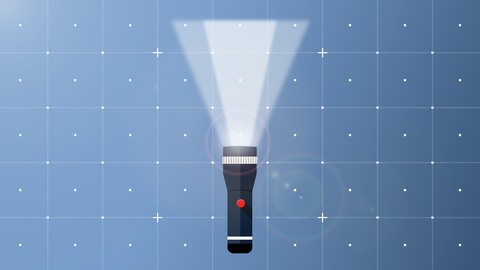
Automating Data Exploration with R
Automating Data Exploration with R, available at $22.99, has an average rating of 4.9, with 21 lectures, based on 183 reviews, and has 1361 subscribers.
You will learn about Build a pipeline to automate the processing of raw data for discovery and modeling Know the main steps to prepare data for modeling Know how to handle the different data types in R Understand data imputation Treat categorical data properly with binarization (making dummy columns) Apply feature engineering to dates, integers and real numbers Apply variable selection, correlation and significance tests Model and measure prepared data using both supervised and unsupervised modeling This course is ideal for individuals who are Interest and need to process raw data for exploration and modeling in R It is particularly useful for Interest and need to process raw data for exploration and modeling in R.
Enroll now: Automating Data Exploration with R
Summary
Title: Automating Data Exploration with R
Price: $22.99
Average Rating: 4.9
Number of Lectures: 21
Number of Published Lectures: 21
Number of Curriculum Items: 21
Number of Published Curriculum Objects: 21
Original Price: $22.99
Quality Status: approved
Status: Live
What You Will Learn
- Build a pipeline to automate the processing of raw data for discovery and modeling
- Know the main steps to prepare data for modeling
- Know how to handle the different data types in R
- Understand data imputation
- Treat categorical data properly with binarization (making dummy columns)
- Apply feature engineering to dates, integers and real numbers
- Apply variable selection, correlation and significance tests
- Model and measure prepared data using both supervised and unsupervised modeling
Who Should Attend
- Interest and need to process raw data for exploration and modeling in R
Target Audiences
- Interest and need to process raw data for exploration and modeling in R
As data scientists and analysts we face constant repetitive task when approaching new data sets. This class aims at automating a lot of these tasks in order to get to the actual analysis as quickly as possible. Of course, there will always be exceptions to the rule, some manual work and customization will be required. But overall a large swath of that work can be automated by building a smart pipeline. This is what we’ll do here. This is especially important in the era of big data where handling variables by hand isn’t always possible.
It is also a great learning strategy to think in terms of a processing pipeline and to understand, design and build each stage as separate and independent units.
Course Curriculum
Chapter 1: Introduction
Lecture 1: What is Covered in this Class
Lecture 2: Big Picture – Data Scrubbing
Lecture 3: Optional – Getting RStudio
Chapter 2: Reading Data
Lecture 1: Common Data Readers
Chapter 3: Data Transformation – Data Scrubbing
Lecture 1: Dates – Reading and Casting Dates
Lecture 2: Text Data – Ways to Quantify Free-Form Text
Lecture 3: Text Data – Categories
Lecture 4: Text Data – Categories 2 & Pipeline Check
Lecture 5: Imputing Data – Dealing with Missing Data
Lecture 6: Pipeline Check
Lecture 7: Caret Library – nearZeroVar
Chapter 4: Feature Engineering
Lecture 1: Engineering Dates – Getting Additional Features out of Dates
Lecture 2: Numerical Engineering – Integers and Real Numbers
Lecture 3: Pipeline Check
Chapter 5: Basic Data Exploration
Lecture 1: Correlations
Lecture 2: Caret Library – findCorrelation
Lecture 3: Hunting Outliers
Chapter 6: Modeling
Lecture 1: Random Forest – Titanic Data Set
Lecture 2: GBM (Generalized Boosted Models)/Caret – Diabetes Data Set – 1
Lecture 3: GBM – 2
Lecture 4: K-means, Unstructured Modeling
Instructors
-
Manuel Amunategui
Data Scientist & Quantitative Developer
Rating Distribution
- 1 stars: 1 votes
- 2 stars: 3 votes
- 3 stars: 11 votes
- 4 stars: 63 votes
- 5 stars: 105 votes
Frequently Asked Questions
How long do I have access to the course materials?
You can view and review the lecture materials indefinitely, like an on-demand channel.
Can I take my courses with me wherever I go?
Definitely! If you have an internet connection, courses on Udemy are available on any device at any time. If you don’t have an internet connection, some instructors also let their students download course lectures. That’s up to the instructor though, so make sure you get on their good side!
You may also like
- Top 10 Language Learning Courses to Learn in November 2024
- Top 10 Video Editing Courses to Learn in November 2024
- Top 10 Music Production Courses to Learn in November 2024
- Top 10 Animation Courses to Learn in November 2024
- Top 10 Digital Illustration Courses to Learn in November 2024
- Top 10 Renewable Energy Courses to Learn in November 2024
- Top 10 Sustainable Living Courses to Learn in November 2024
- Top 10 Ethical AI Courses to Learn in November 2024
- Top 10 Cybersecurity Fundamentals Courses to Learn in November 2024
- Top 10 Smart Home Technology Courses to Learn in November 2024
- Top 10 Holistic Health Courses to Learn in November 2024
- Top 10 Nutrition And Diet Planning Courses to Learn in November 2024
- Top 10 Yoga Instruction Courses to Learn in November 2024
- Top 10 Stress Management Courses to Learn in November 2024
- Top 10 Mindfulness Meditation Courses to Learn in November 2024
- Top 10 Life Coaching Courses to Learn in November 2024
- Top 10 Career Development Courses to Learn in November 2024
- Top 10 Relationship Building Courses to Learn in November 2024
- Top 10 Parenting Skills Courses to Learn in November 2024
- Top 10 Home Improvement Courses to Learn in November 2024






















